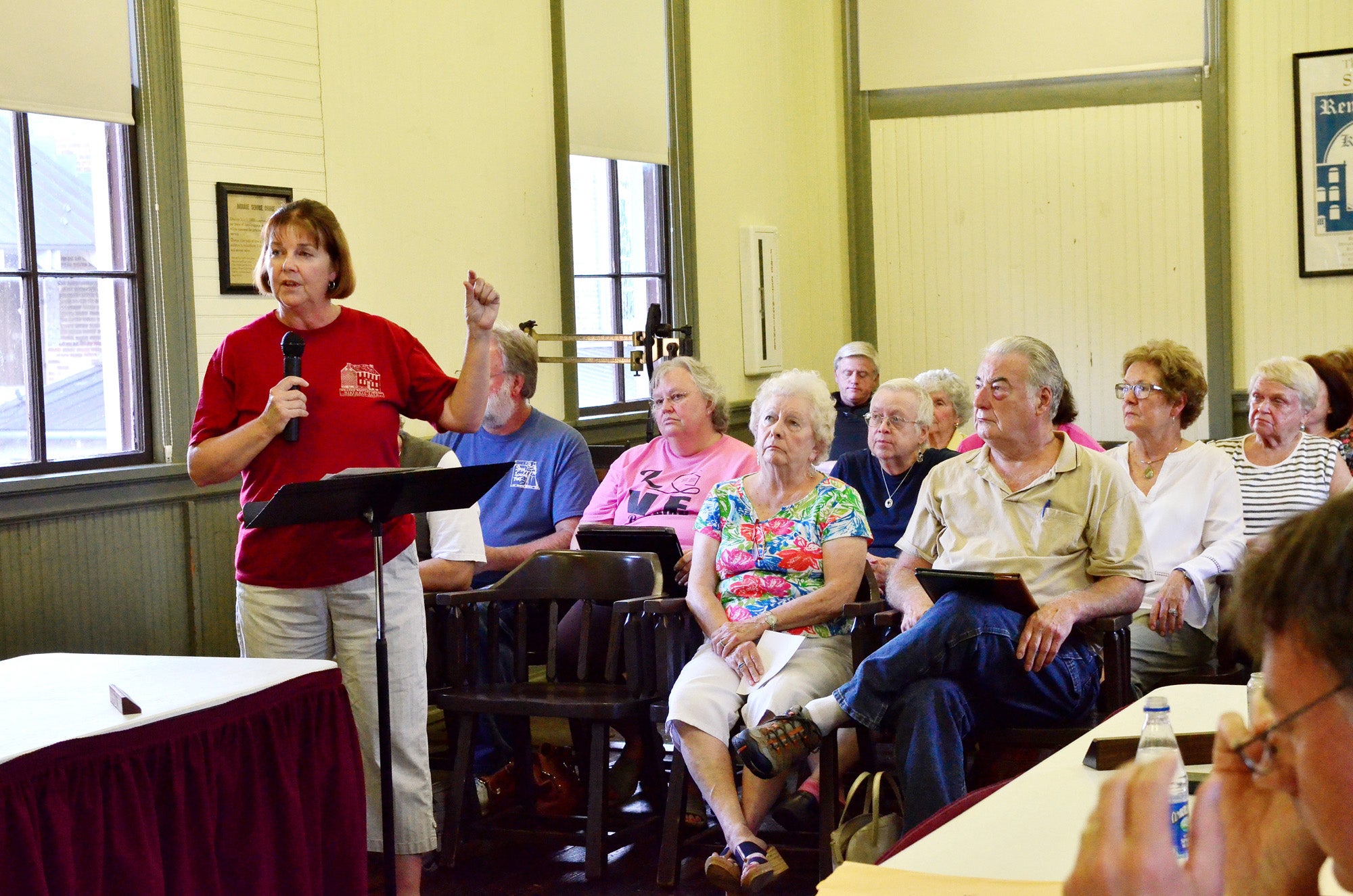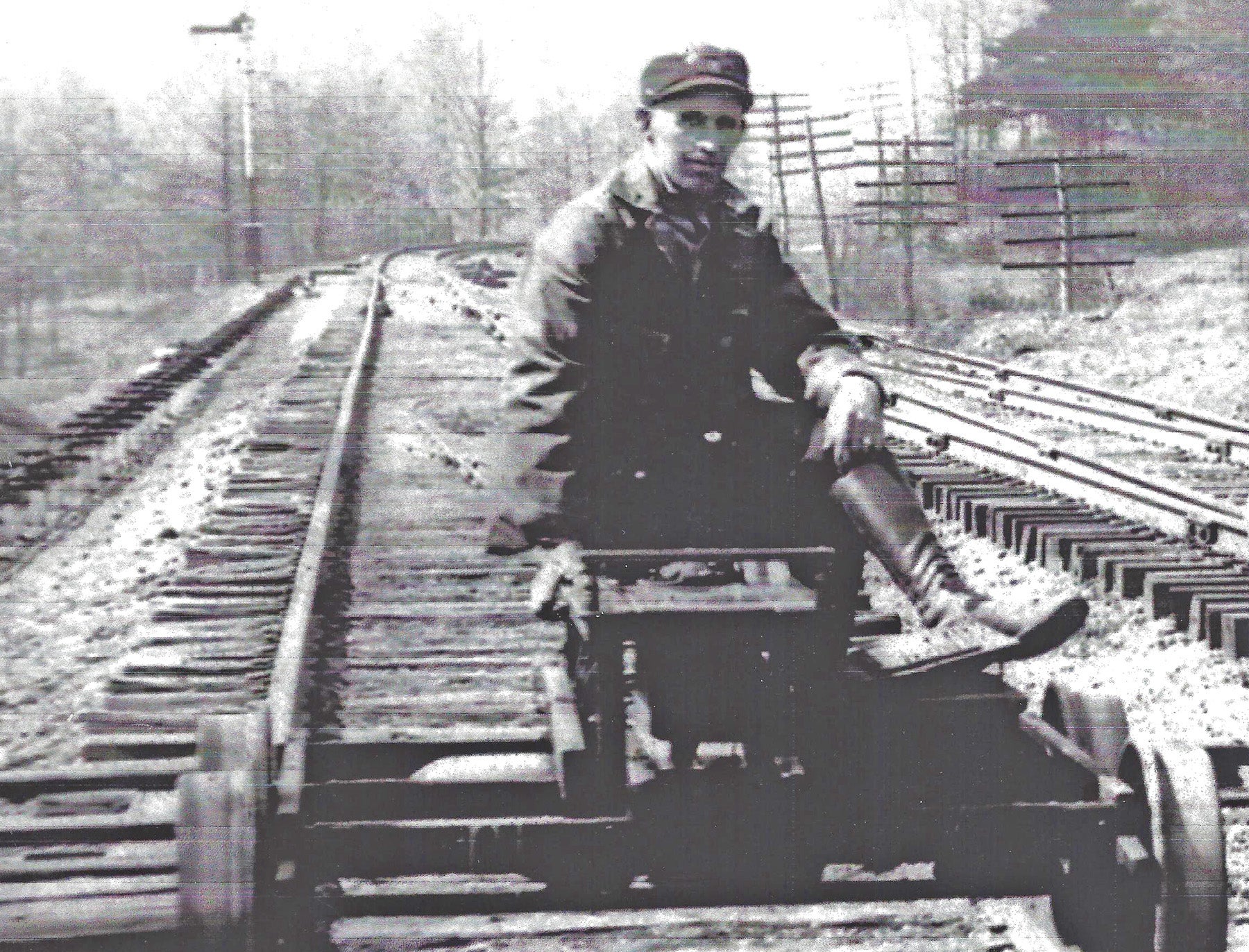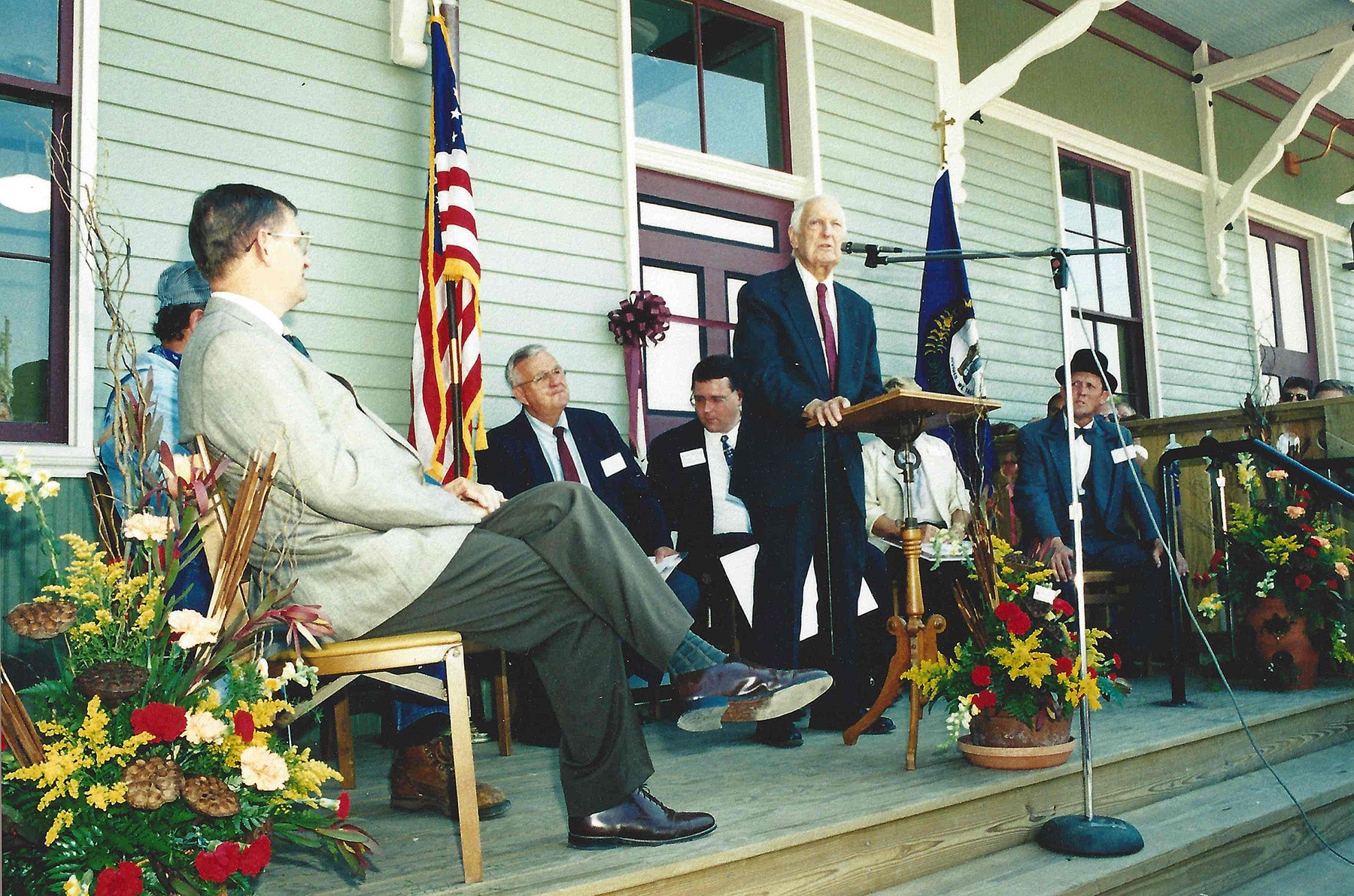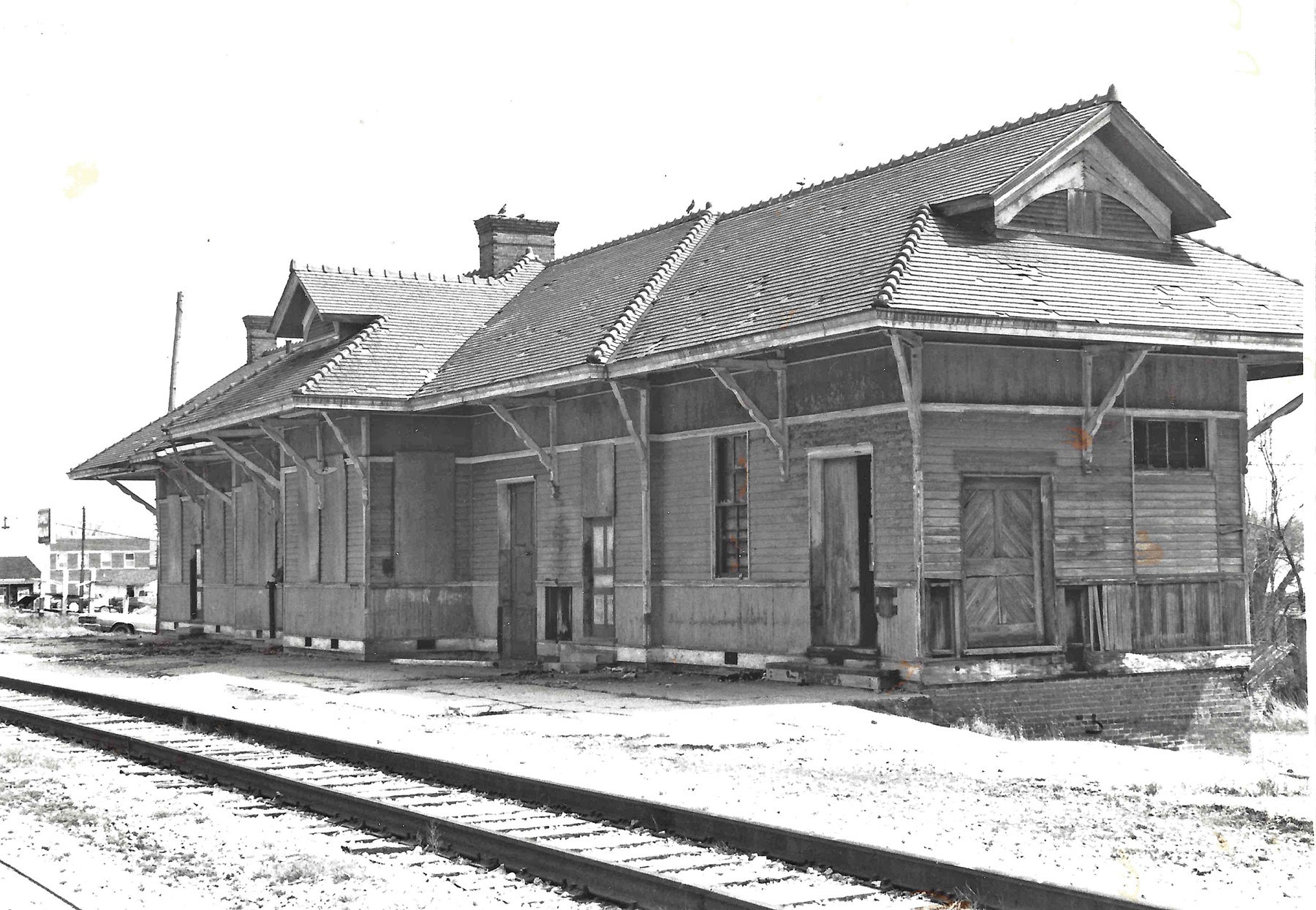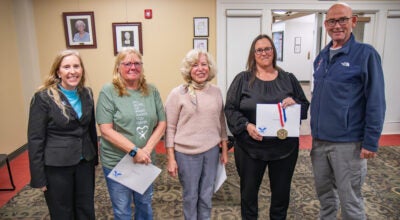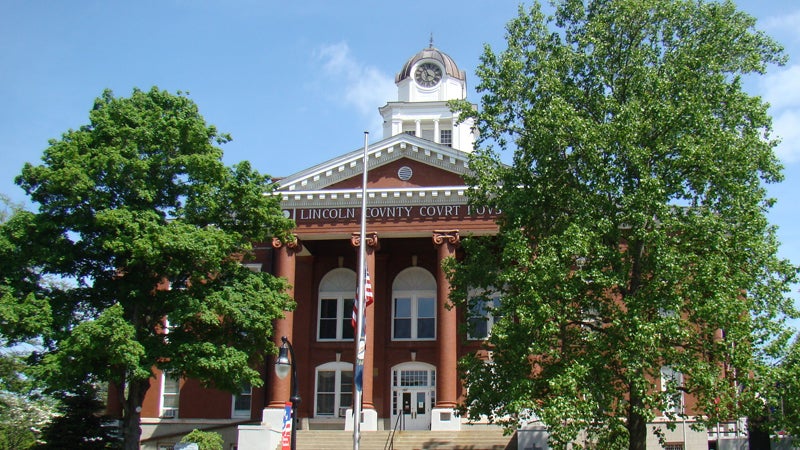Possible plans to move city hall to L&N Depot raise preservation concerns
Published 10:33 am Friday, November 8, 2019
|
Getting your Trinity Audio player ready...
|
STANFORD — Local preservation leaders are grappling with the Stanford City Council’s study into possibly moving city hall to the historic L&N Depot, with some worrying that the move would jeopardize the historic integrity of the property.
At the September city council meeting, after an ordinance to move the council’s monthly meetings from the depot to the Lincoln County Public Library failed, members of the council voted to conduct a study on possibly moving city hall to the depot and the costs to improve lighting, the sound system and wifi access.
As word of the council’s proposed study circulated throughout the community, interest in the October meeting became fervent
And, when the doors opened for the October city council meeting, concerned Stanford citizens and Lincoln County Historical Society members flocked into the meeting room ready to weigh in on the issue.
Jane VanHook, Lincoln County Historical Society President, was the first to take the microphone as the council opened the floor to citizen’s comments.
“I am here on behalf of the Lincoln County Historical Society and as a citizen of Stanford,” she began. “I am here to share with you why we oppose moving city hall to the historic depot. We had a meeting … We had several talking points brought up. It’s a great thing that our city is having growing pains. I think it’s wonderful. But we cannot take our historic sites, because we have growing pains, and change them into businesses.”
A big impetus behind the move to find a new home for city hall is the need for a space for the Stanford Police Department. A house bought next to city hall to accommodate the department several years ago did not work out and now the department is squeezed in alongside the Stanford Fire Department at its Main Street station.
“That is one of the talking points we raised – that we are in full support of our police department having the space that they need, but we cannot support the relocation of city hall to the historic depot,” VanHook explained. “It’s too important and that’s why I’m here. We just need to keep that in mind as we make decisions. Honestly, I think the police department needs a brand new building with the best state of the art technology and holding rooms. Anything they want because it’s a whole different culture as to what they have to deal with.”
Stanford resident and historical society member Irene Jaggers agreed.
“I’m certainly for the police to have a place. I just think that you all could find someplace else besides this place,” she said. “We were one of the three original counties formed out of Virginia in 1780. We were the largest county … We have the oldest records in the state of Kentucky according to the Secretary of State because we’ve not lost any by fire. People come here from all over, Florida, California, Texas – just everywhere. They don’t just want to go to the courthouse to see old records. They want to see other places here and this is one of the places we tell them about. We tell them about the museum up on Main Street and about up here and they love to take pictures up here. It breaks my heart with all the work that has been put into this to keep it. I’m afraid we’ll abuse the building because there will be so much traffic.”
“We need to preserve all our historical buildings that we can.”
While VanHook explained that she understood the need to move city hall to accommodate the police department, she couldn’t agree with sacrificing the depot, which was rededicated after a major restoration in September of 1998.
“Stanford’s past is its future,” she said. “This depot is a historic treasure. It won the Willis Award (Ida Lee Willis Memorial Foundation Historic Preservation Award), the highest award you can win for historic preservation. It’s almost completely original. It’s like walking into the past. It helped jump-start the revitalization of downtown and the depot is our tourism office now.”
VanHook backed up her desire to preserve the historic property with increased tourism dollars.
“Tourism dollars are hard to see but they are there,” she said. “We just got the impact study from the state of Lincoln County’s tourism. It went up this year. It’s one of the only counties that went up. For us to not have alcohol sales, that’s a major thing. So it has to be our historic sites that are bringing these people into our downtown.”
She noted that the depot and its museum were open every Saturday during the summer and that there had been 223 signed visitors so far this year. That’s visitors who took the time to sign the guest book.
“Numbers presented and made public are inaccurate because not everyone that visits signs the book,” VanHook said. “I’ll admit it was probably the dedication service, when they dedicated the depot, that was the last time I signed the book. We had a group of students from McKinney Elementary’s 21st Century. They individually did not sign that book but they had a great time. They went to the fort, the springs and we brought them here. They loved it and they asked all kinds of questions. That’s why it’s so important because, on a business card that Sue Saufley had presented to the committee that was renovating this, it was to educate our young people about our history.”
And not only children get a lesson in history.
“Our history group all agree that our visit to Stanford and Lincoln County was one of our very best days,” read VanHook from a letter sent to her from a group of adult visitors. “Now you’ve got to realize that these are lawyers. These are professional people. They came from all over Kentucky. I got them as a group and we met at the library. The first place we came was here,” she said before finishing the letter, “What a remarkable and vibrant town. Thank you so much from all of us.”
Randy Denham, a member of the Lincoln County Historical Society and Friends of the Fort, is active in promoting tourism in the area and can’t imagine not having the depot remaining as it is.
“We’ve been working hard to build tourism and putting city hall at the depot would mean a loss of tourism dollars. I mean, we don’t have Kings Island out on the bypass to draw people to our town. We have our history,” he said.”By the time tourism dollars bounce around town – you can multiply that dollar 10 times. You’re shooting yourself in the foot if you change the museum into something that does not draw tourists. If you do away with the museum, look at the money you’re going to lose in tourism dollars.”
VanHook noted that the relocation of city hall to the depot could not only hurt tourism and the museum but also damage the structure itself.
“We would have one less attraction in town. We have pages of artifacts (donated or loaned items to the museum) on the list …There may not be enough room to keep them or they may just disappear. And that’s because of – who’s going to be watching them?” said VanHook. “Modern desks and file cabinets will take away all the character. The structure may not be able to withstand the weight put on those floors. I know those file cabinets are full, believe me. People take pictures all the time here. They walk up from the library and they’re always taking pictures of the depot. One thing we don’t want to have out there is a big sign that said, ‘City Hall’ or ‘No Parking.’”
“We will have maintenance no matter where we go. Maintenance issues whether it is a new building or an old building. Nobody is going to say, ‘Hey, the depot’s been turned into city hall, let’s go look around!’ Nobody is going to say that. Less than one hundred depots are left in the state. We used to have several just in this county. We don’t want to make the same mistake that other cities have made and lose our depot as an historic destination.”
It was more than just history that prompted VanHook and Jaggers to voice their concerns on moving city hall to the depot. It was also an emotional connection. VanHook passed around a photograph of her late grandfather, Everett L. Dye, who worked on the railroad, seated upon a velocipede as she talked of the letters Dye and her grandmother wrote to each other before they were married and how he talked about his job on the railroad in every letter. Jaggers shared how she used to get on the train all by herself as a little girl to ride to Lebanon.
They weren’t alone. Stanford City council member Sara Givens stepped away from the council table to speak as a citizen and relate her emotional bond with the depot.
“I’ve lived in this city for 74 years Born and raised here. Most of you don’t know this, but I’m a railroad track woman,” she said. “I lived on the track and I would watch, as a little girl, the trains coming through. My brother, Gary Brown, and my sister, Barthenia Brown, we use to play right here and watch the trains go by. We would watch people come and go. We never knew their names but, if you remember, people would throw candy off the trains. We would have all this candy after the train passed through.”
“Mostly black people were on the railroad. I can say that because I know – Hazel Jones, Jackie Jones. They lived on the track. I lived on the track. Laura Mae Stewart. Shelby Stewart. Deborah Kay. We all lived right there watching the trains go through every day. So my heart goes out. When they took the tracks out, my house was on the track. I have seen trains come through here and pick up passengers. I would hate to see this change. I believe we should keep what we have, preserve what we have and let the tourists come in and enjoy. The first Thursday in the month I am so happy to walk on these grounds one more time because of my memories.”
Lisa Stone shared how her great aunt, Lillian Long, came down to the depot to see President Franklin Delano Roosevelt as he came through town on the train. She also expressed a desperate need for a new home for the police department.
“As far as the police department, I’m all about raising taxes to help them,” she said. “As Scottie (Mayor Ernst) said earlier, when we built the new fire department there were a lot of people against that. They asked, ‘Why do you need the bigger firehouse? Why do you need the bigger trucks?’ A couple months ago I really appreciated the police because my house was broken into and everything destroyed. My antiques. Everything. What these guys deal with today is not like Swannie McKinney (police chief) back in the day and Mayor (George) Reed. We are small town and we love small town. But we need a state of the art police department. They just need someplace for when they’ve just brought somebody in or somebody is taking out a warrant or somebody is in handcuffs.”
“It’s out of hand,” Foster said of the city’s crime. “It’s been a week since an attempted breakin at my house. We’ve got so many drug dealers and traffickers. Where are we going to put these people? We need somewhere for the police to take care of business.”
Gary Clough, a member of the historical society who has lived in Lincoln County for just five years, briefly addressed the council. After sharing that he had people often visit him who were awed by the historic town and depot, Clough had just one question.
“Do you have any alternative plans or are you developing any alternative plans if this doesn’t go through?”
Ernst took the microphone to answer Clough.
“What council asked for at the last council meeting was for a study to be done. For Chief (Scott) Maples and (Stanford Police Chief) Zach Middleton to kind of look into what could be done here. So where we’re at right now is trying to get information about it.” he said.
“We gave them 45 days to complete a study,” interjected council member Dalton Miller. “I’m not opposed to continuing the study as long as it’s a time-limited study. We can’t go three years down the road. One police officer’s life is worth more to me than anything else around here because that has become a danger zone, The police department is a danger zone not only for the police but for the fire department and any citizen that is there filing a complaint or anything else. So I’m agreeable to a committee time-limited, very time- limited. I might go for 90 days or 180.”
“This depot means a lot to many different people It does bring a lot to this community. It is our heritage and railroad,” Luzia Foster stated as she continued citizen’s comments. “I’ve seen a lot of different depots in a lot of different states but this one is unique and I’ve traveled in several states, Tennessee, Virginia and, of course, western Kentucky. This one is special. When you take things like that and turn them into more modern buildings for other purposes … I understand the purpose. I know they or city hall need a new place. I still think you need to look for another place. I think there are other opportunities out there that can be looked at that may be more suitable in the long run.”
Council members pointed out that a few other sites had been considered, including the old school board office on Somerset Street and the old jail behind city hall. The old Walmart building was also mentioned at the October meeting.
“This was not the first option that was thrown out,” said council member Ronnie Deatherage. “I didn’t want to let what happened to the garage happen here and that’s why I suggested it. I thought, ‘We already own the building. Let’s take advantage of it.’ I love history. I have a history master’s and I’m the last one that would want to change history.”
“But when I go to pay my taxes, I can’t find a parking place. It’s not convenient,” he said. “I’m not opposed to looking at other options but, if we can’t come up with one, we have to come back to this one.”
As alternative ideas were tossed around, the subject of building a new building came up.
“What about forming a committee to look at this site as well as other sites or the possibility of building a new building,” Ernst said. “A few years ago there was a vision to build a new fire station. We did that. I feel like we need to look at the future down the road as the police department grows. See what is out there. I think that is what the citizens are asking us to do.”
“I’m not against doing a study,” said council member Ella Mae Curlis. “I don’t think we should find an old house to redo every five years. If we’re going to do something, we need to do something that lasts.”
Council member Peggy Hester asked if Chiefs Maples and Middleton could expand their study and add people to help then added that finances were a big concern for her.
“First of all, we’ve got to consider costs. We’re in debt as a city,” she said. “Right now we have to talk about feasibility, finances and money that we don’t have. We will probably have to raise taxes again and you all will be looking at new council members here if we do.”
Hester’s comment prompted Miller to poll the crowd, asking, “How many of you are willing to raise your taxes to pay for a new police station?”
“It’s your money we’re spending and I’m trying to be responsible with every dime,” Miller said.
“Nobody wants to raise taxes,” answered Jaggers. “I think the tax should be raised a little bit. It’s something to help the city.”
Givens chimed in saying, “I’m going to complain, too, but if I see what it’s going for, then I don’t mind paying more in taxes. I know people are going to grumble, but it’s going to take all of us and taxes to help this project happen.”
The city appears to have some seed money for the project. City Clerk Jone Allen said that the city had in its account a gift of $15,000, the $65,000 in proceeds from the sale of the downtown parking garage and $10,000 from the James Brown relocation project.
Deatherage reminded the crowd that, while the council is not in a crunch to make a decision about the city hall and police department, that something needs to be done.
Architect Garlan VanHook, who was part of the original restoration project on the depot, had these few words before the council moved on with other business.
“My heart reaches out to see that it remains a city icon,” he said. “Maybe things can’t stay the same but I’m in the amen corner of my wife’s (Jane VanHook) corner and the Lincoln County Historical Society in that this was the catalyst that has promoted all the positive and good things we’ve done here in the last 20 years.”
“We have such a unique anchor here. There are few towns in American that have this type of preservation. I wish the city would take a deep breath. When It might appear to not be used all the time or in a great deal of effort, it’s the uniqueness of the space. It will take away from the unique character and draw that the building has. It will not be the same icon. I wish you would consider a building committee that would look into what options might be the best for the city.”


